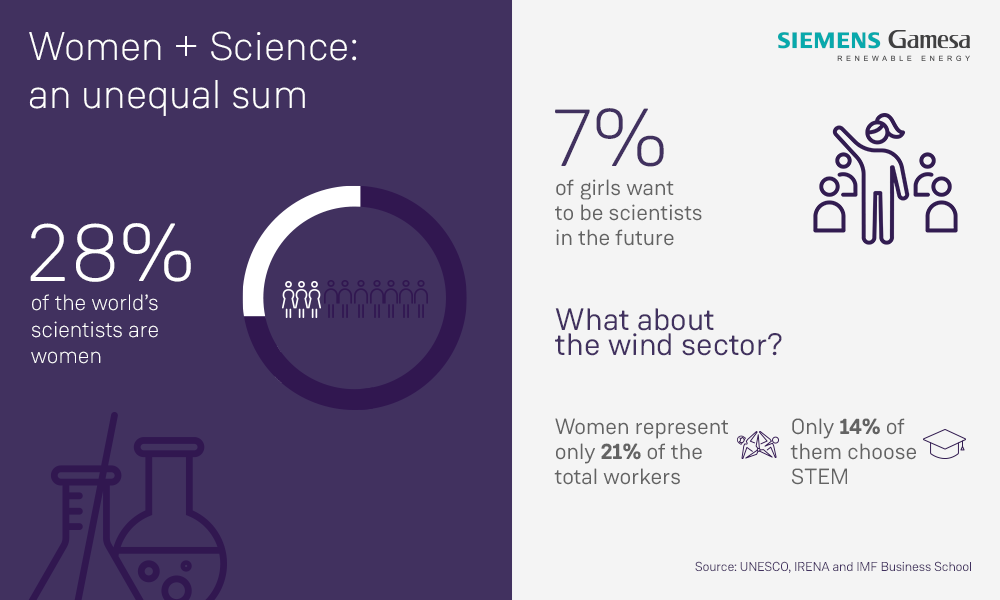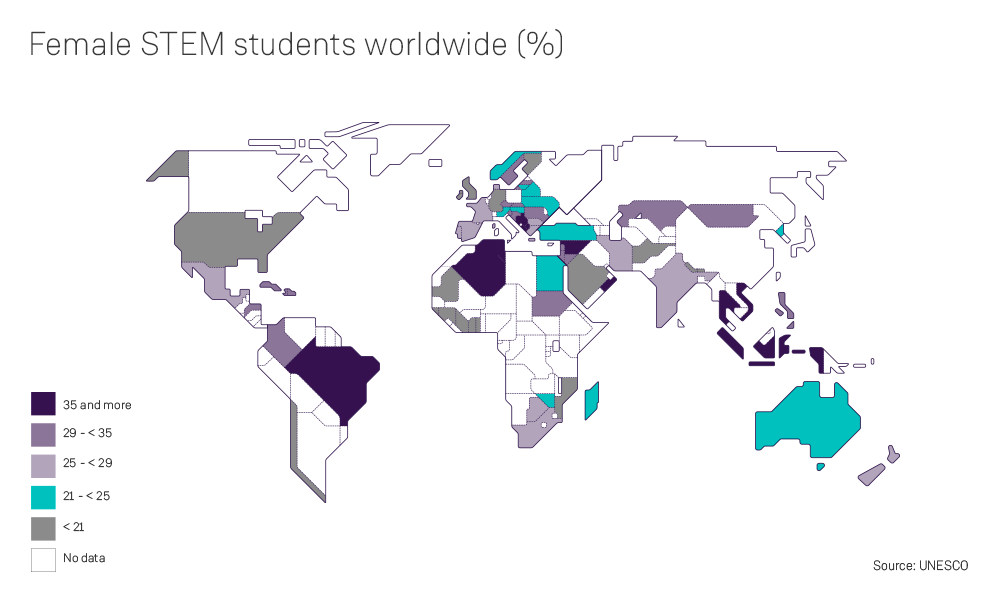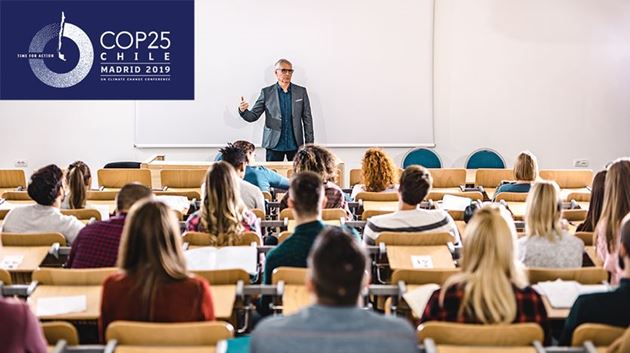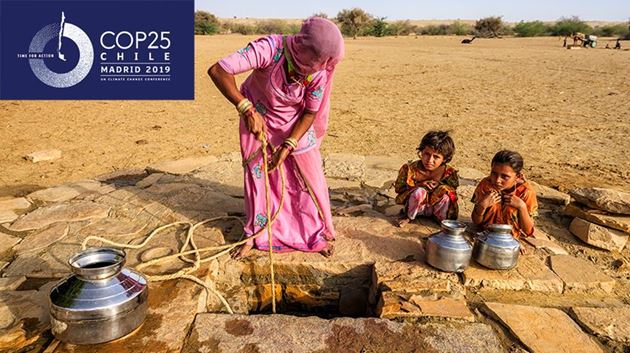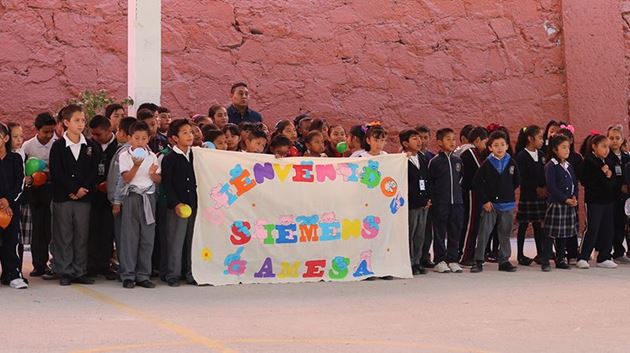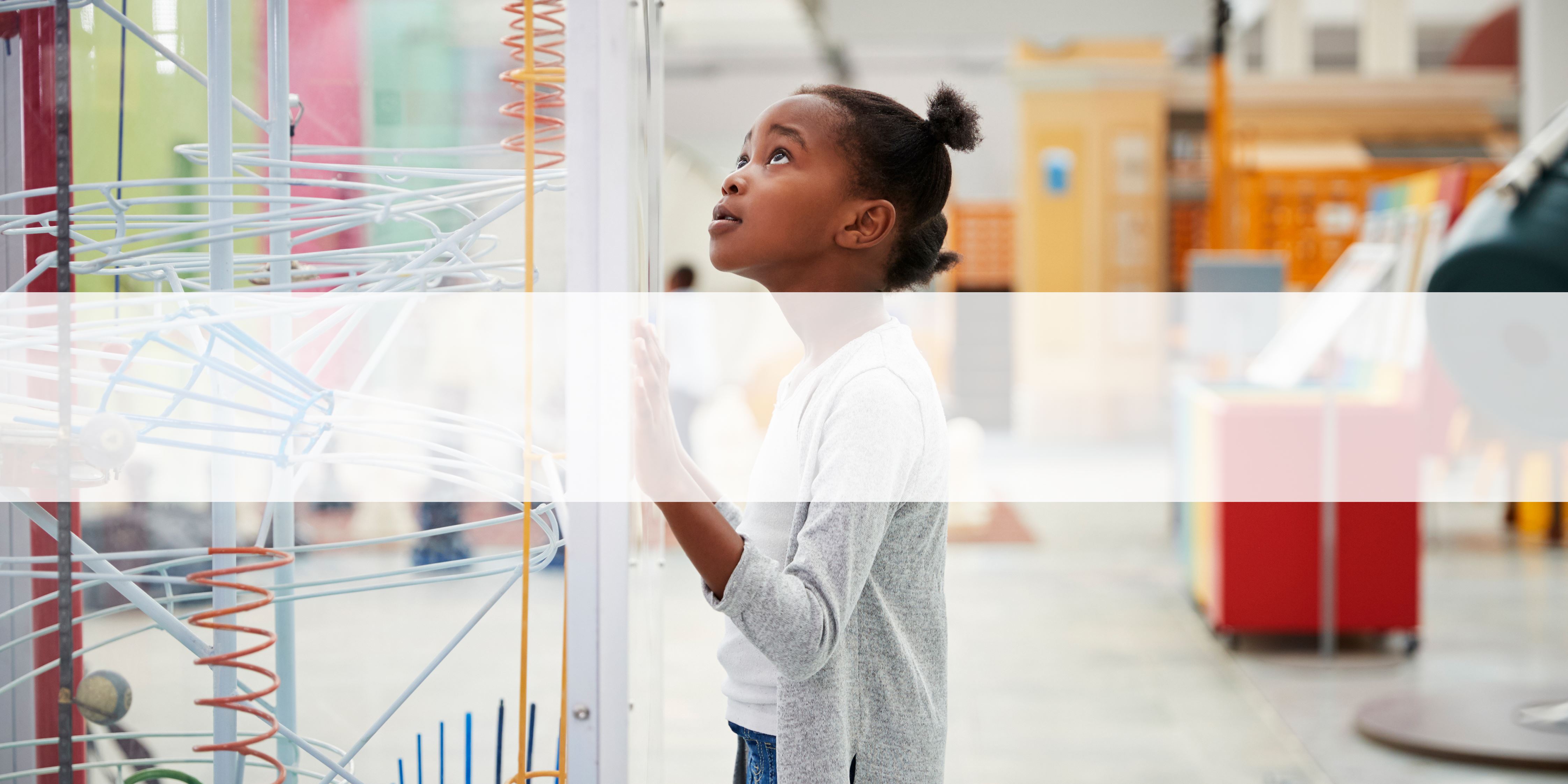
Science: a true obstacle course for women
International Day of Women and Girls in Science
Women and science have faced many hurdles over the course of history. Even though female participation in university education has steadily increased in recent years, in the field of science/technical-based degrees, or STEM, women only represent 28%. In contrast in other sectors such as primary education, female participation is much higher: 66% in 2018*.
The figures are no better in the renewable energy sector either. According to the January 2020 study by the International Renewable Energy Agency (IRENA) Wind Energy: A Gender Perspective, female presence in this sector is 32%. If we narrow the range to take into account jobs that require scientific/technical knowledge, women account for 28%. And for the wind sector specifically the figure drops to 21%, while in STEM careers women represent a mere 14%.
Are workers aware of these barriers?
According to the IRENA study, half (53%) of participants recognized the existence of obstacles, although the figure differs considerably between men and women. Specifically, 65% of women said the barriers were clear, compared to 34% of men, so there is still a lot of work to be done to raise awareness of this social problem.
Labor diversity is not only necessary, but beneficial for companies themselves, as priorities and perspectives differ between men and women, giving a broader and richer vision to society.
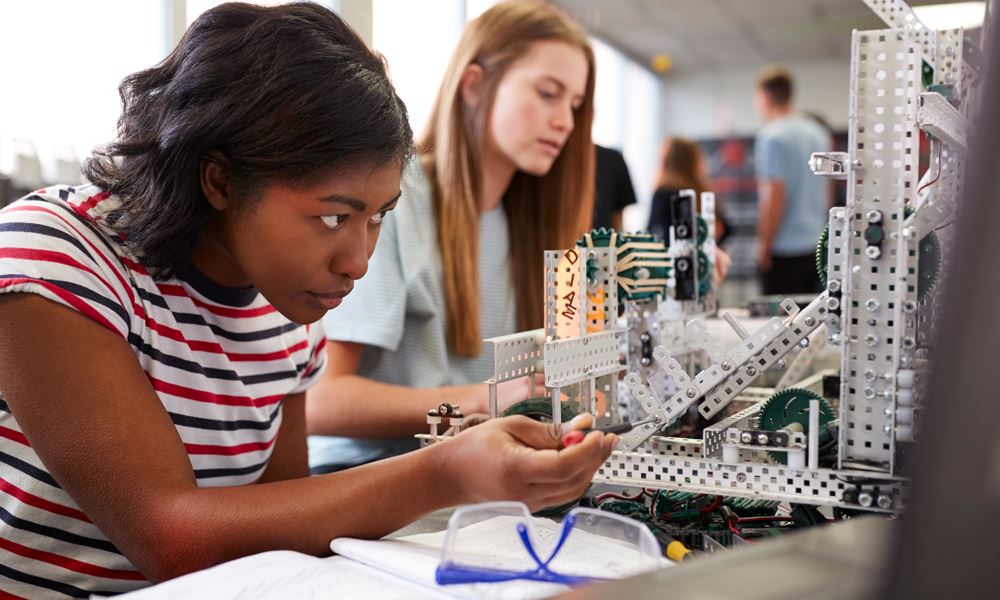
However, the promotion of gender diversity is also a strategy to help retain and attract talent. For that reason many institutions and companies are opting to create or participate in mentoring programs, in which both female workers and girls are taught the benefits of STEM careers and work is carried out to break down the stereotypes surrounding them.
One of them is the Wind Global Leadership Program, launched in 2019. The objective of the program is to provide participants (wind sector workers with jobs that require STEM knowledge) a comprehensive education with the latest technological advances and wind industry best practices. In addition, former female students are building a network of female mentors for future generations. Applications for the 2020 edition are open until February 16. Other local examples are the Windfang FrauenEnergieGemeinschaft in Germany, Qvinnovindar in Sweden and Inspira Steam in Spain.
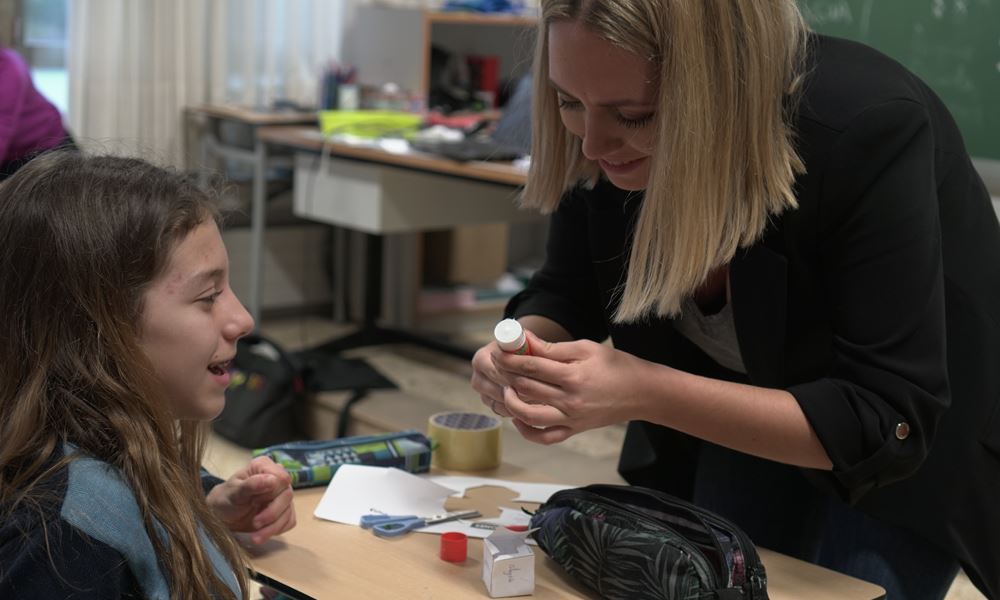
Mentoring network in Spain
Inspira STEAM is a project that was launched in Spain and focuses on encouraging girls of around 11 years old to study science and technical degrees through raising awareness and through guidance actions, provided by professional females in the world of technology and science. The project is promoted by the University of Deusto because, while females make up 54% of the Spanish university system, the figure is only 26% for technical degrees.
Female mentors address issues such as stereotypes, women and science throughout history, motivation of female students, strengthening their self-esteem, and an overview of STEM degrees: what they involve and what the contribution can be made to society by studying them. The project started in 2016 with 17 mentors, and this year's edition (2019/2020) now has 587.
Beatriz Gutiérrez, a Siemens Gamesa engineer, is one of the program's participants, and said that for her the main thing is to make it clear that there are no differences between boys and girls and that "they must be aware that just because they are girls does not mean that can’t study science or they can't follow their dream career. It’s important that there are women in science."
*Primary education, teachers (% of women) | Data. (2020). Retrieved on February 2, 2020, from The World Bank. Access to the information

